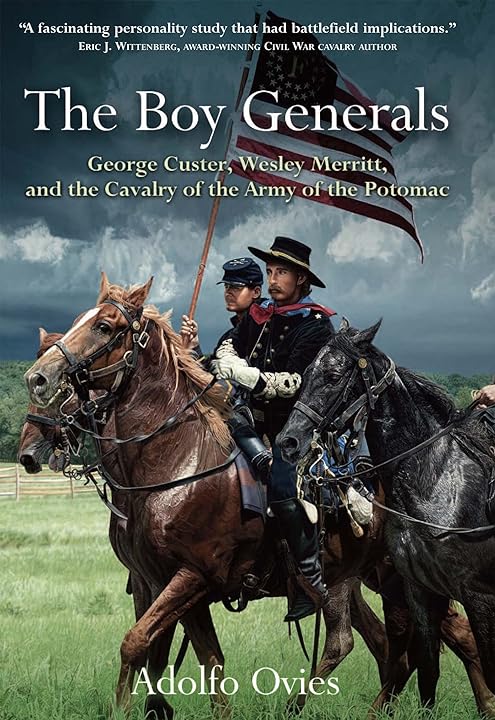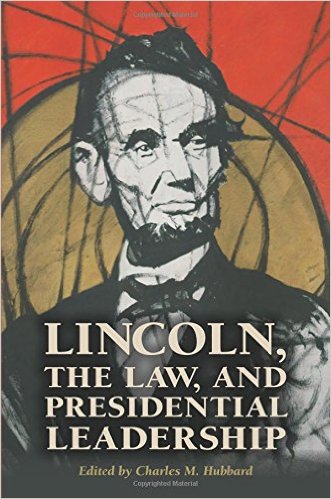 The Boy Generals: George Custer, Wesley Merritt, and the Cavalry of the Army of the Potomac by Adolfo Ovies. Savas Beatie, 2022. Cloth, ISBN: 978-1611215359. $34.95.
The Boy Generals: George Custer, Wesley Merritt, and the Cavalry of the Army of the Potomac by Adolfo Ovies. Savas Beatie, 2022. Cloth, ISBN: 978-1611215359. $34.95.
In The Boy Generals, Adolfo Ovies details the origin stories of two of the Civil War’s most important cavalryman: George Custer and Wesley Merritt. The two men rose to fame on nearly identical trajectories—sharing similar backgrounds, boasting the same West Point training, and proving themselves as adept cavalry commanders early in the war, despite their tender years. But, as Ovies shows, for all that should have bound Merritt and Custer together as friends, the two became bitter rivals. At the heart of their feud? A fundamental disagreement about how cavalry could best serve the Union war effort, with Merritt preferring the tactics of the prewar Dragoons, who arrived to a battle and fought dismounted like infantry, while Custer lauded the derring-do of the Hussars, used as mounted shock troops to throw enemy soldiers off their guard.
As the first in part of projected three-volume study of Custer and Merritt, the book carries readers from the outbreak of the Civil War through to the battle of Gettysburg. There are, in truth, two stories being told in the pages of The Boy Generals. One focuses on the disagreements between Custer and Merritt, which certainly deserve explication (though they have received their fair share of attention because of Custer’s infamy). The second is about a cavalry force coming into its own amid a bloody civil war, despite countervailing ideas about how best to deploy the thousands of horses and horse soldiers enlisted to fight for the Union. This story is new and exciting. Using Merritt and Custer as foils for the prevailing schools of thought about cavalry strategy in the Civil War, Ovies has produced an excellent study of the development of the Union cavalry arm in war’s early years.
Ovies avoids wading into some of the more controversial arguments about the Union cavalry’s performance at Gettysburg. Told from the perspective of the men who served with Custer and Merritt, the chapters dealing with Gettysburg provide an ideal conclusion to this segment of the trilogy. Merritt and Custer each had a key part to play in the three-day clash in southern Pennsylvania. Both men also received important promotions from their commanding officer, Alfred Pleasonton, in the weeks prior to the battle—making them two of the youngest brigadier generals in the Union Army. Both wanted to prove these laurels were deserved. Custer, by luck or a twist of fate, got a far greater opportunity to do so on July 3, when he led a charge of his Michigan Wolverines into a cavalry fight on the eastern edge of the battlefield. Merritt, meanwhile, was left to mop up the rear of the Confederate army to the south of town, which gave him little satisfaction. This is where Ovies ends his tale—setting readers up for the second installment of the trilogy (recently reviewed for The Civil War Monitor by Jonathan Noyalas).
This is a work of distinction. The scholarship is solid, with an array of sources evident in the footnotes. The prose is compelling and moves readers along with clarity and good pacing. If there are any bones to pick, they are minor, though it should be noted that Ovies has a habit of suggesting that only male scholars have written about the Army of the Potomac and its cavalry officers (see, for example, pages xiii and 243). But that is a small matter in an otherwise excellent volume. Credit is due to both Ovies and his publisher, Savas Beatie, for taking on the challenge of a three-volume study. An in-depth look at Merritt, Custer, and the Army of the Potomac’s cavalry has long been warranted. And now, two of the war’s great cavalrymen have found a very worthy chronicler.
Cecily Zander is the author of The Army Under Fire: The Politics of Antimilitarism in the Civil War Era.

